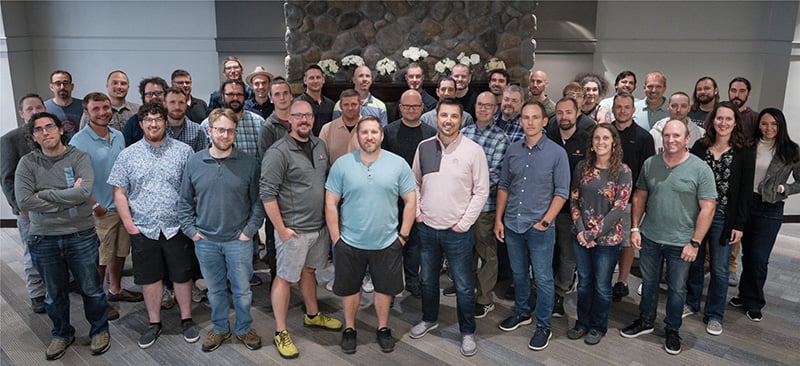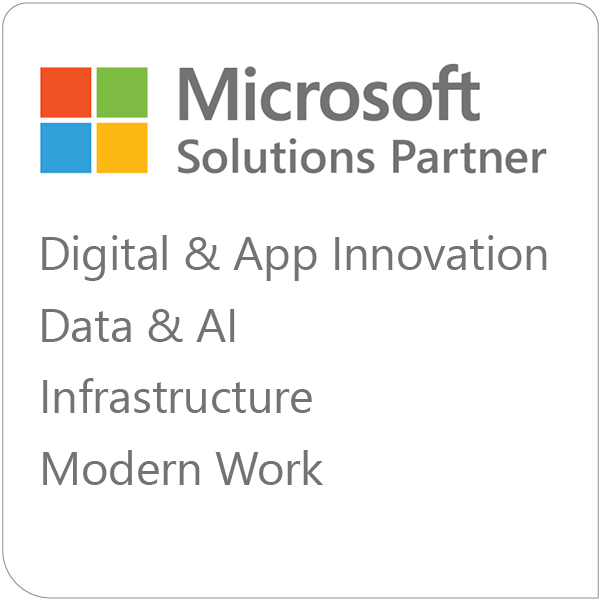Introduction
The cloud computing market is dominated by three major players: Amazon Web Services (AWS), Microsoft Azure, and Google Cloud Platform (GCP). Each platform offers a comprehensive suite of services for computing, storage, database, networking, analytics, machine learning, and more. These services allow businesses to build, deploy, and scale applications in the cloud without managing physical infrastructure.
However, while the core offerings are similar, there are significant differences between the platforms that can impact which one is the best fit for a particular organization or workload. Factors like pricing structure, ease of use, unique services, and ecosystem integrations all come into play. In this article, we will do a deep dive comparison of AWS, Azure, and GCP to help inform your cloud platform decision.
Key Services and Capabilities
At a high level, AWS, Azure, and GCP all provide a similar set of basic building blocks for cloud applications. However, the specific names, features, and implementation details often vary between platforms.
When it comes to computing services, the backbone of any cloud application, AWS offers Elastic Compute Cloud (EC2) which provides resizable virtual machines in a wide variety of configurations. EC2 is used by many large-scale applications, such as Netflix which runs nearly all of its infrastructure on AWS, including its streaming video service which accounts for over 15% of global internet traffic.
Azure's computing offering, Azure Virtual Machines, is remarkably similar to EC2, and is used by companies like Walmart and Chevron for significant web workloads. Google Compute Engine is GCP's equivalent service, providing virtual machines that can be customized and scaled as needed. Snapchat, for example, uses GCP for its compute needs to handle spiky traffic from features like Stories.
When it comes to cloud computing, Microsoft Azure offers significant cost savings compared to AWS, especially for hosting Windows Servers. In fact, AWS can be up to 5 times more expensive than Azure for running Windows Server and SQL Server workloads. To illustrate, let's compare the costs of an Azure D4s v4 virtual machine, with 4 vCPUs and 16 GB RAM running Windows Server, to an equivalent AWS EC2 M5 xLarge VM with the same specs. Looking at pricing in the US West regions over a 12 month period at 730 hours per month, Azure comes out far ahead in pricing. The Azure pricing takes advantage of the Azure Hybrid Benefit, which allows you to pay a reduced compute rate (equivalent to running Ubuntu Linux) for 3-year Reserved Instances if you have Software Assurance. In contrast, the AWS pricing reflects their standard 3-year Reserved Instance rate for Windows Server with monthly payments. Another key advantage of Azure is they provide free extended security updates for Windows Server 2012 and 2012 R2 VMs. With AWS, you have to pay for those extended security updates, with an annual cost that is averaged over 3 years for Windows Server Standard.
For storage, AWS Simple Storage Service (S3) is the most well-known cloud storage service, used for everything from hosting static websites to serving media files to storing data for analytics. A software company, for instance, uses S3 to store and serve all the listing photos on its platform. Azure Blob Storage and Google Cloud Storage offer comparable object storage functionality.
When it comes to databases, each cloud offers managed relational and NoSQL options. AWS's Relational Database Service (RDS) is used by consumer goods companies to run large-scale databases in the cloud without the overhead of managing the underlying infrastructure. Azure SQL Database and Google Cloud SQL provide similar capabilities. For NoSQL, options like AWS DynamoDB, Azure Cosmos DB, and Google Cloud Datastore offer high scalability and flexible data models and are used by many web-scale applications. A ridesharing company, for example, uses DynamoDB to store real-time data on available drivers and rides.
In the analytics and big data space, AWS offers powerful tools like Elastic MapReduce for running Hadoop and Spark, and Amazon Athena for running SQL queries directly against data in S3. A user reviews online platform uses these services to analyze terabytes of data daily to provide personalized restaurant recommendations.
Azure's analytics offerings include Azure HDInsight for big data processing and Azure Synapse Analytics for data warehousing and analytics. GCP is known for its strength in this area, with tools like BigQuery providing a serverless, highly scalable way to analyze massive datasets. Twitter uses BigQuery to analyze billions of tweets in real-time.
For machine learning and AI, AWS offers SageMaker for building and deploying machine learning models, used by companies like Intuit for fraud detection. Azure provides a similar ML platform, used by companies like Maersk to optimize shipping routes and container utilization. GCP is a leader in this space, with TensorFlow, an end-to-end open-source platform for machine learning, being a key offering. Airbnb uses TensorFlow on GCP to categorize listing photos and detect objects within them.
This is just a sampling of the extensive services offered by each cloud provider. While the basic categories are similar, each platform has its own unique offerings and specialties that may make it a better fit for certain use cases.
Pricing Models
One of the key attractions of the cloud is the ability to replace large upfront capital expenditures with more flexible operational costs. All three cloud providers offer pay-as-you-go pricing where you're billed only for the resources you consume.
AWS charges by the second for many services like EC2 and Lambda, with data transfer out (egress) also incurring charges. Many businesses find AWS pricing complex to understand and predict, leading to higher-than-expected bills. Tools like AWS Cost Explorer and third-party platforms like CloudHealth can help monitor and optimize AWS spend.
Azure also charges by the second for services like Virtual Machines and App Service, with egress data charged and ingress data free. Azure offers a pricing calculator to estimate costs, but many find that actual costs can be hard to predict. Azure Cost Management provides some tools to analyze and control spending.
GCP charges for compute resources by the second, with a 1 minute minimum, and charges for storage by the gigabyte-month. GCP charges for both data ingress and egress, with some exceptions. GCP provides a pricing calculator and cost management tools in the GCP Console.
All three providers offer various discounts for committed usage. AWS Reserved Instances provide a significant discount on EC2 in exchange for a 1- or 3-year commitment. Azure Reserved VM Instances offer a similar discount for a commitment to a specific VM type. GCP's Committed Use Discounts provide a discount for committing to a certain level of usage of Compute Engine resources.
Despite these discounts, cloud pricing remains complex, and costs can quickly get out of control without proper governance. Many organizations use third-party cost management tools to get better visibility and optimization recommendations across multiple clouds.
Netflix, for example, despite being one of the largest AWS customers, has a dedicated team focused on optimizing its AWS spend. They've built custom tools to analyze usage and costs, automatically purchase Reserved Instances, and identify idle resources to shut down.
Ease of Use and Management
Managing cloud resources can be complex, especially for organizations used to traditional on-premises IT environments. Each cloud provider offers a range of tools and interfaces to help.
The AWS Management Console provides a web interface for managing all AWS services. While powerful, it can be overwhelming due to the sheer number of services and options. Many companies use infrastructure-as-code tools like CloudFormation or Terraform to automate resource provisioning and management.
The Azure Portal is the primary web interface for Azure, providing a customizable dashboard and access to all Azure services. It's generally considered more user-friendly than AWS, but still has a learning curve. Azure also offers a mobile app for monitoring and managing resources.
The Google Cloud Console is the web-based management tool for GCP, known for its clean interface and powerful search capabilities. GCP puts a strong emphasis on command-line tooling as well, with the gcloud CLI being a primary way many developers interact with the platform.
In terms of learning curve, GCP is often considered the easiest to get started with, especially for developers already familiar with Google tools and interfaces. AWS is known for its extensive configurability but can be overwhelming for new users. Azure falls somewhere in the middle - fairly intuitive but with powerful options for customization.
Ultimately, cloud management is a skill that needs to be learned regardless of the platform. Many larger organizations have dedicated cloud teams responsible for governance, automation, and best practices. Smaller teams often rely on managed services and automation as much as possible to reduce the management overhead.
An online marketplace technology company, for example, has a centralized cloud infrastructure team that maintains tools and best practices for AWS across the engineering organization. They heavily use infrastructure-as-code to manage their environment, with services like Puppet and an internal deployment system called SmartStack.
Unique Strengths and Differentiators
While the core offerings are similar across clouds, each platform has unique strengths that may make it a better fit for certain organizations or workloads.
AWS, as the market leader and most mature cloud, has the broadest and deepest offerings. They're known for rapidly innovating and releasing new services - in 2020 alone, AWS launched over 2,300 new features and services. AWS's extensive partner ecosystem and marketplace is also a strength, with a wide variety of third-party tools and services that integrate with AWS.
Azure's key strength is its integration with the Microsoft ecosystem. For organizations that heavily use Microsoft tools like Office 365, Teams, Active Directory, or .NET applications, Azure can provide a very integrated and familiar environment. Azure is also known for its strong hybrid cloud capabilities, with services like Azure Arc enabling management of resources across on-premises, multicloud, and edge environments.
GCP's differentiators often center around its technical innovations and cloud-native approach. Services like BigQuery for serverless data warehousing, Anthos for hybrid and multicloud application management, and TensorFlow for machine learning are standout offerings. GCP is also known for its focus on open source, being the birthplace of projects like Kubernetes, TensorFlow, and many others.
Google's technical prowess is what attracted Spotify to GCP. The music streaming giant has said that GCP's data and machine learning offerings were a key factor in their decision to migrate from AWS to GCP in 2016. Spotify uses GCP's tools to analyze user data, provide personalized recommendations, and power features like Discover Weekly.
Reliability and Uptime
Reliability and uptime are critical considerations for any cloud deployment. All three providers offer Service Level Agreements (SLAs) for their services, typically guaranteeing uptimes in the range of 99.9% to 99.99%.
AWS has a strong track record for reliability, with many services achieving uptimes significantly higher than their stated SLAs. However, AWS has experienced some significant outages, such as the S3 disruption in 2017 that impacted many major websites and services.
Azure also generally meets or exceeds its stated SLAs. According to Microsoft, Azure has consistently delivered at least 99.9% uptime across its core services over the past several years. Azure provides detailed information on the uptime of individual services, allowing customers to track reliability.
GCP has a reputation for strong reliability, benefiting from Google's extensive experience managing large-scale infrastructure for services like Google Search, Gmail, and YouTube. However, GCP has also experienced outages, like the 2019 incident that took down services including Gmail, YouTube, and Google Cloud Storage.
Ultimately, no cloud is immune to failures, and designing for failure is a critical practice. Netflix, despite being one of the largest AWS customers, has built extensive resiliency into their architecture. They use a practice called Chaos Engineering, intentionally injecting failures into their systems to ensure they can withstand real-world outages. They even have a tool called Chaos Monkey that randomly terminates compute instances to test fault tolerance.
In addition to uptime, data security and privacy are major concerns for many cloud customers. All three clouds invest heavily in security and compliance, with numerous certifications for standards like ISO 27001, SOC 1/2/3, HIPAA, and PCI DSS. However, security in the cloud is a shared responsibility model - the provider secures the underlying infrastructure, but the customer is responsible for securing their applications and data.
Capital One learned this lesson the hard way in 2019, when a misconfigured AWS S3 bucket led to the breach of personal data of over 100 million customers. While AWS provided the secure infrastructure, the responsibility for properly configuring and securing the S3 bucket fell on Capital One.
Conclusion
Choosing between AWS, Azure, and GCP is not a simple decision. Each cloud has strengths and weaknesses, and the "best" choice depends on a multitude of factors specific to your organization and workloads.
AWS's key strengths include its massive scale, extensive service catalog, and mature ecosystem. It's a solid default choice for many applications, especially those requiring fine-grained control. However, AWS can be complex to manage and optimize for cost.
Azure shines for enterprises heavily invested in Microsoft technologies looking to extend to the cloud. Its hybrid capabilities and Active Directory integration are standout features.
GCP differentiates itself with its technical prowess and cloud-native approach, especially around data, machine learning, and open source. Its simple administration and discount models also appeal to many. However, GCP has a smaller service catalog and ecosystem compared to AWS and Azure.
Increasingly, many organizations are adopting a multicloud strategy, using different clouds for different purposes to avoid vendor lock-in and leverage the best of each platform. However, this approach comes with significant complexity in terms of management, security, and data integration.
Ultimately, the key is deeply understanding your own requirements and mapping them to the capabilities of each cloud. Factors like your existing technology stack, staff skills, regulatory requirements, and specific application needs should all drive the decision.
Once a cloud is chosen, success requires significant investment in architecture, automation, security, and governance. The cloud is a powerful tool, but not a magic bullet. Proper design and management are critical to realizing its full potential.
As the cloud wars continue to heat up, with each provider constantly launching new services and capabilities, organizations have more choice and flexibility than ever before. The challenge, and opportunity, is harnessing that power to drive significant business value. The companies that do it well will have a significant competitive advantage in the digital era.






